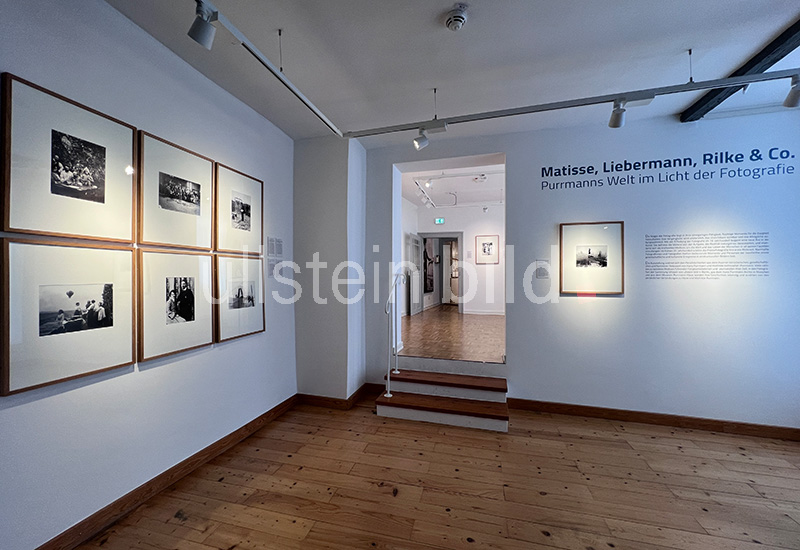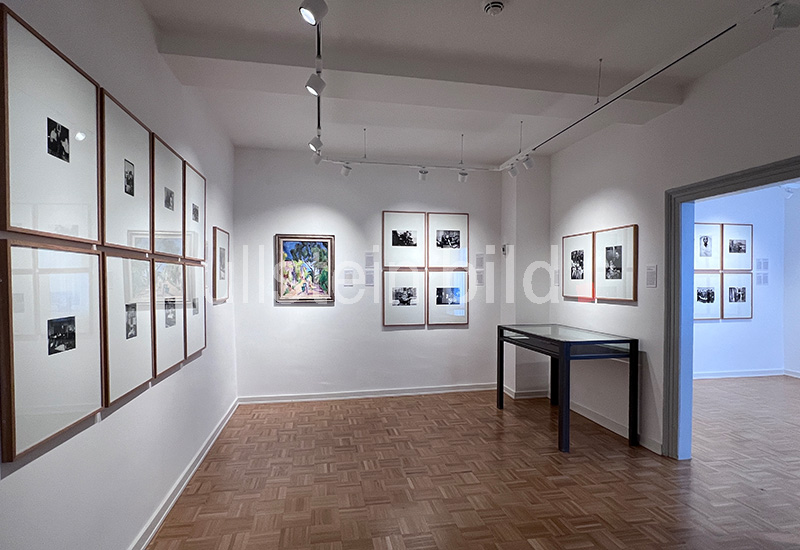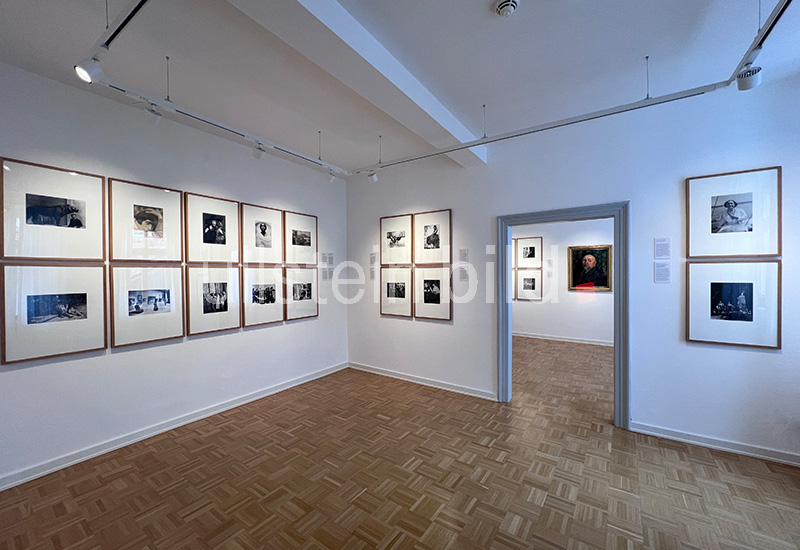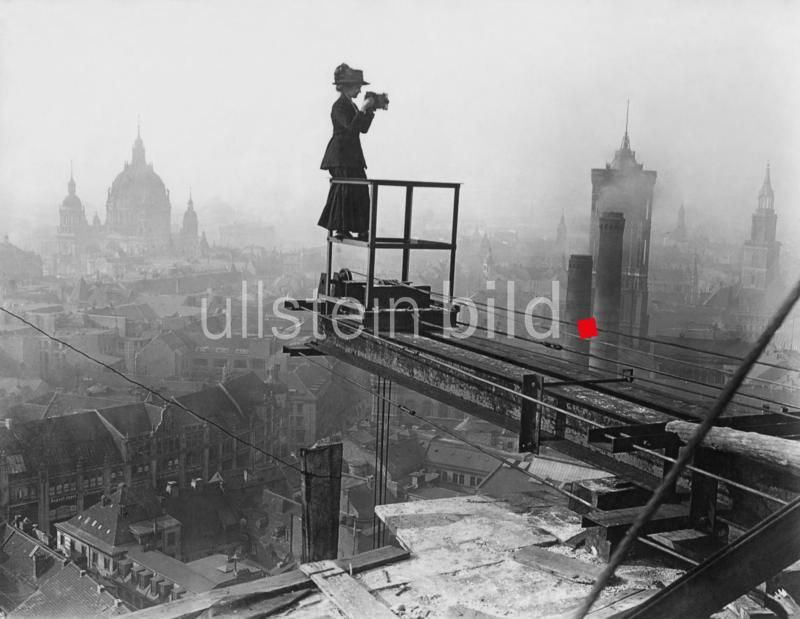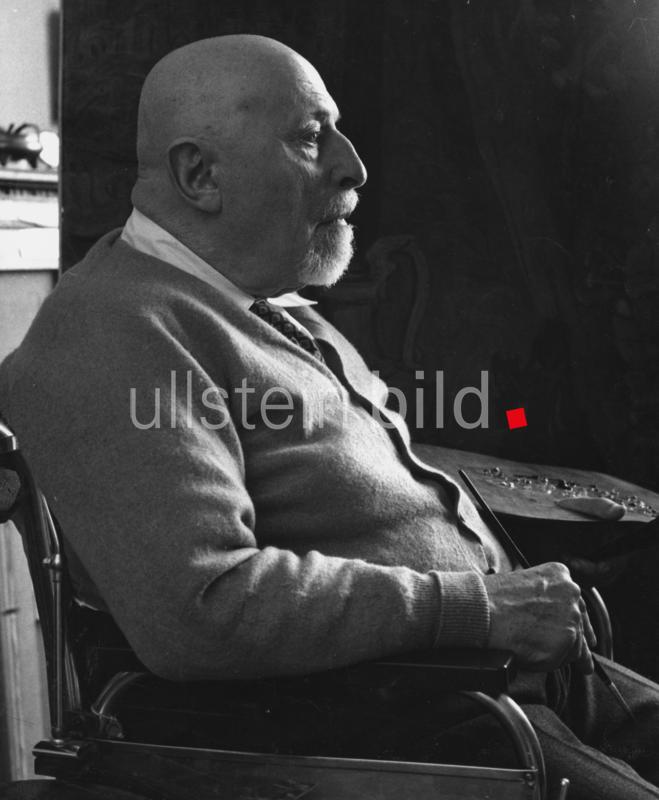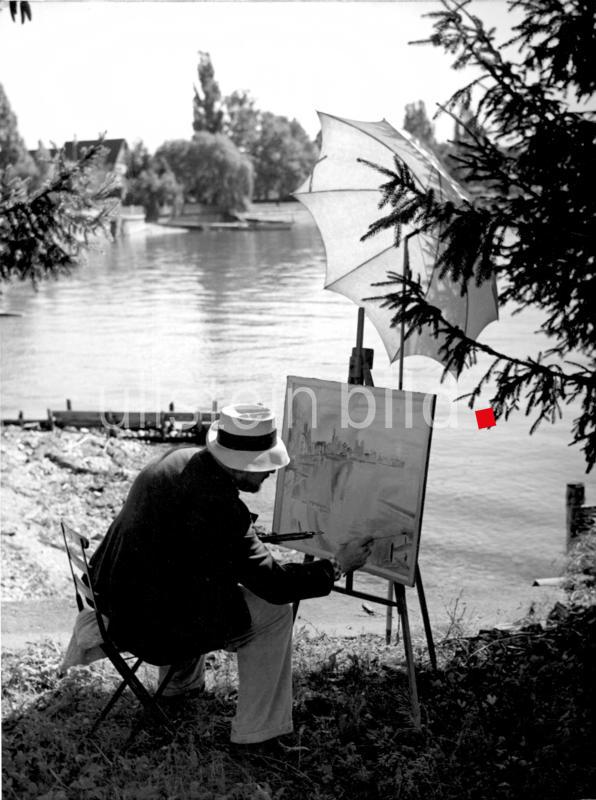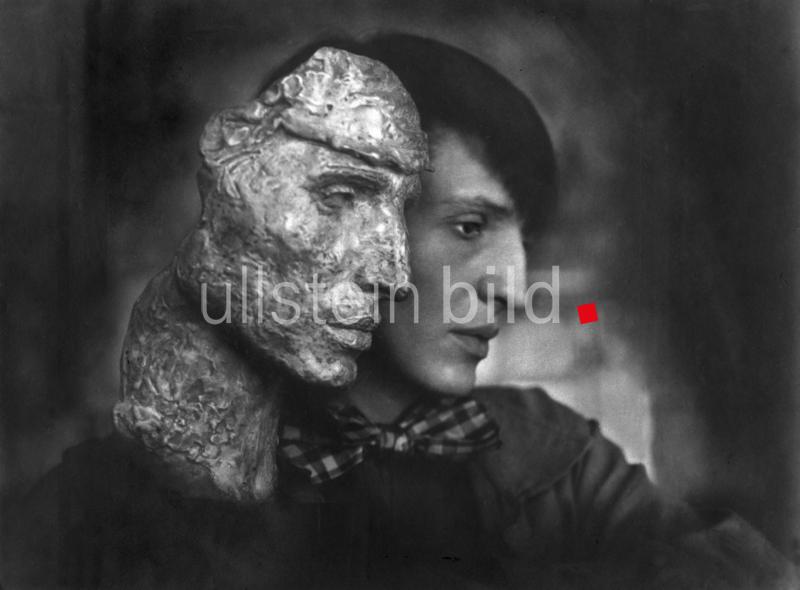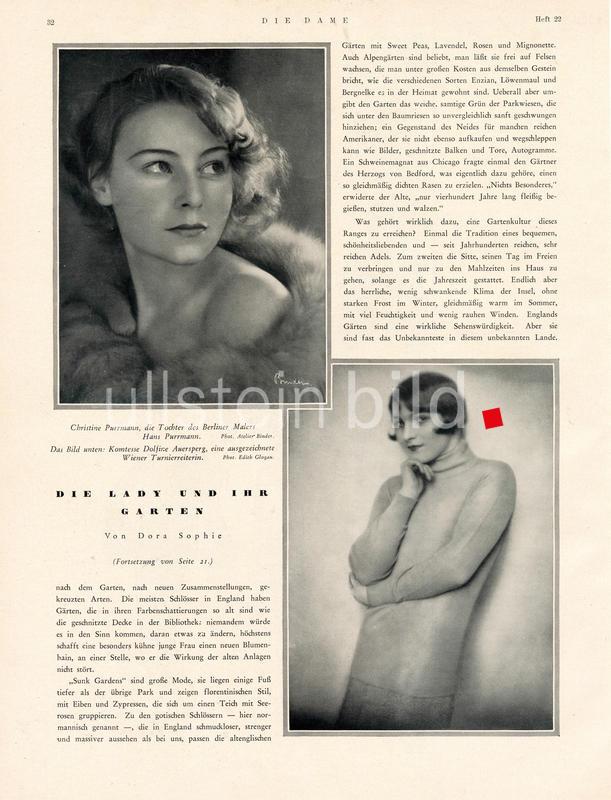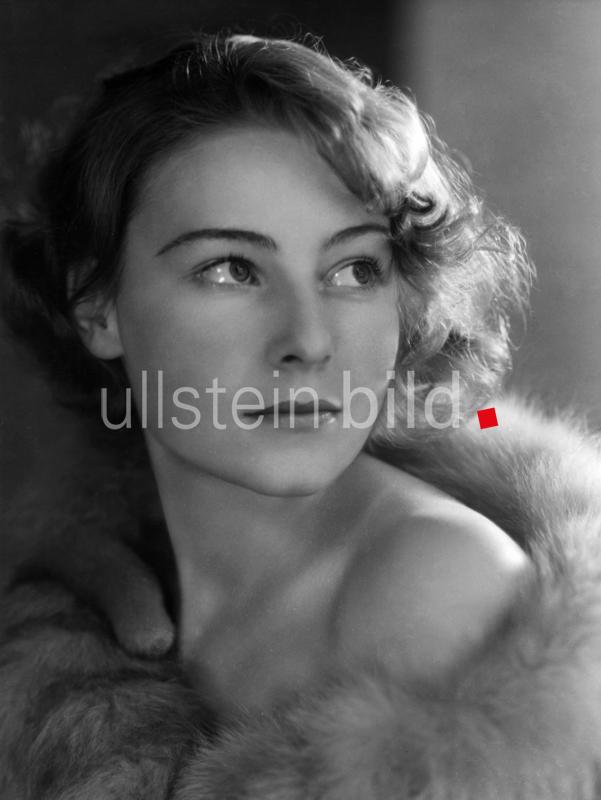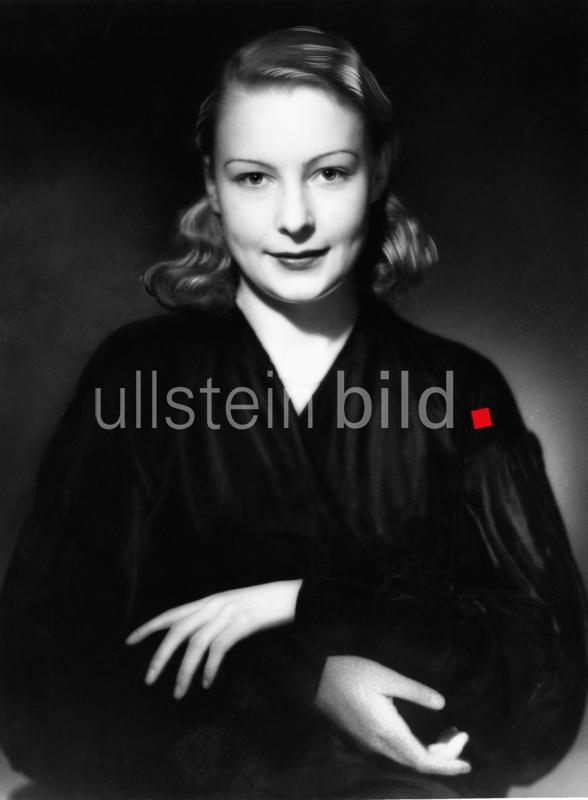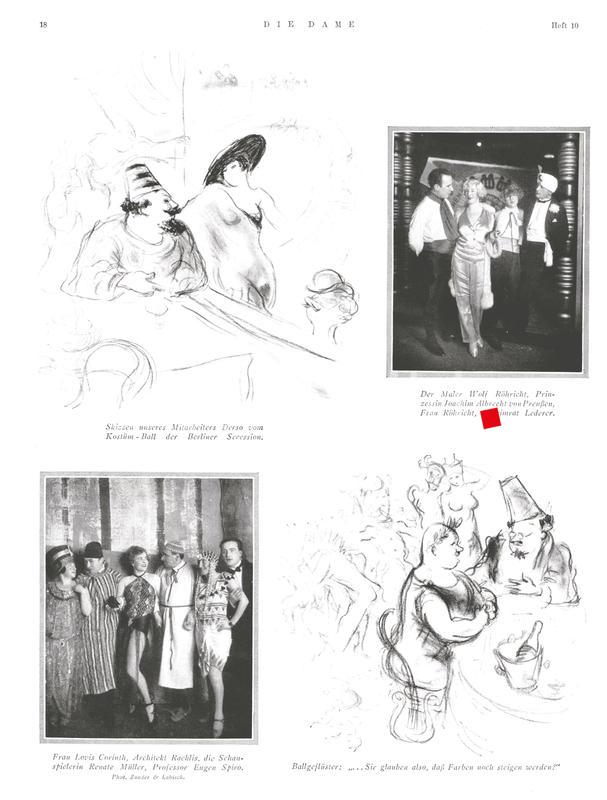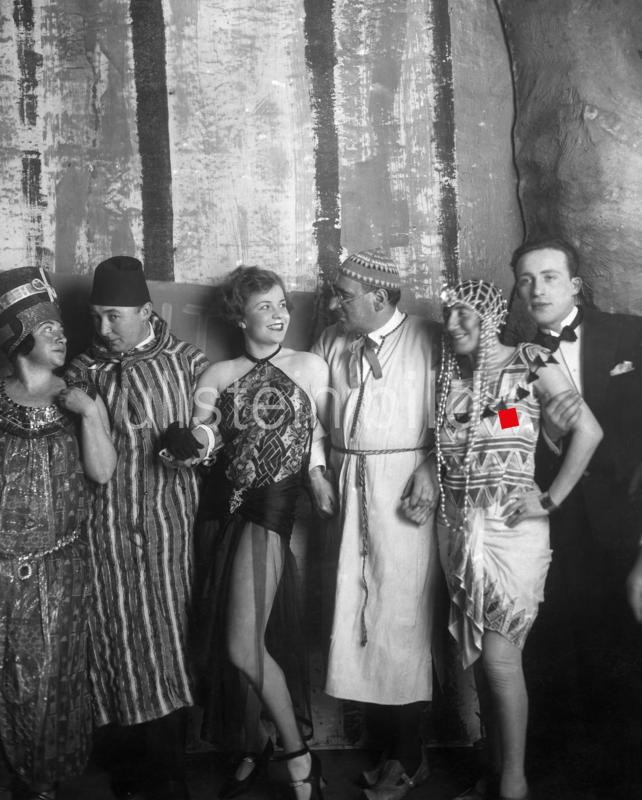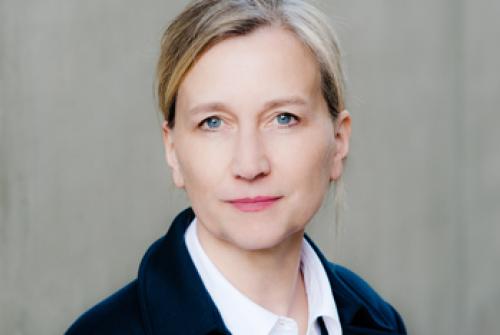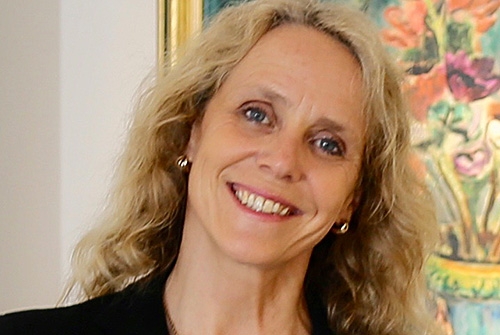In the light of photography
Interview with Maria Leitmeyer, Director of the Museum Purrmann-Haus in Speyer
_______________________________________________________________
Ms. Leitmeyer, in the exhibition Purrmann's World in the Light of Photography: Matisse, Liebermann, Rilke & Co., paintings and drawings come together with photographic works from the Ullstein Collection – a meaningful meeting of different art genres. At the same time, a meeting of different artists, the title refers to Matisse, Liebermann, Rilke & Co. We are in the midst of an exhibition that transcends borders in many ways. How does it promote new insights or results, where do the works and artists shown in the exhibition enter into a connection, where do tensions arise?
The expressive photographs in the special exhibition and the colorful paintings by the artist couple Hans Purrmann and Mathilde Vollmoeller-Purrmann from the museum's permanent collection engage in an exciting dialogue. Around 1900, while artists in European metropolises such as Paris and Berlin were striving to renew their formal language, photojournalism was experiencing its first heyday. In the course of the 19th century, the invention of photography had freed painting from its centuries-long task of faithfully depicting reality. This paved the way for modernism. In the Museum Purrmann-Haus, this is the central theme linking the works of the artist couple from Henri Matisse's close circle and the 100 or so photographs in the special exhibition. Just how close the connection between painting and photography can be becomes particularly clear when portraits painted in oil are juxtaposed with photographs of the same person. Last but not least, it was often painters who devoted themselves to the new medium and continued their career as photographers, such as Wanda von Debschnitz-Kunowski or Karl Schenker.
Hans Purrmann and Mathilde Vollmoeller-Purrmann were firmly anchored in the European avant-garde of the first half of the 20th century. For the first time, the exhibition sheds light on the painter couple's diverse artistic, family and social network. The photographs tell fascinating stories about the life and work of leading modernist personalities. Numerous quotes from letters from the artist couple's extensive correspondence document their connections to Hans and Mathilde Purrmann and tell of the social tensions in times of unique historical upheaval. Many of these protagonists from the world of fine art, literature, theater and film – such as Henri Matisse, Max Liebermann, Rainer Maria Rilke, Leo von König, Lovis Corinth, Karl Vollmoeller, Hermann Hesse, Josephine Baker, Erich Kästner and Tilla Durieux – were among the favorite subjects of the leading press photographers of their time.
The Ullstein cover picture for the exhibition was taken around 1910 and goes back to the Berlin Illustrations-Gesellschaft. Several hundred photographs from this early German press photo agency are part of the Ullstein photographic collection. They suggest an intensive collaboration between the Ullstein publishing house, its magazine and newspaper editors and the photographers who were very successful at the beginning of the 20th century. The photograph shows an – unknown – photographer above the rooftops of Berlin, with the Marienkirche, the Rotes Rathaus and Berlin Cathedral recognizable around her. The motif symbolizes the departure and daring of the image-makers and the possibilities of a new medium.
The poster motif of the exhibition is representative of the spirit of an international, interdisciplinary, tolerant and visionary avant-garde of the first half of the 20th century. At a time when women were not yet admitted to universities and official academies, this young woman decided to work as a photographer. In her search for new perspectives on the world, this pioneer of photojournalism showed great courage above the rooftops of Berlin. For her work, she climbed onto the boom of a crane that was used to build the Altes Stadthaus on Molkenmarkt in 1910 to photograph the city from a bird's eye view.
The introduction of roll film and later the 35mm camera at the beginning of the 20th century opened up new possibilities for capturing the world in all its facets. Initially, the published photos were mainly used to illustrate newspaper texts. They soon developed autonomous perspectives and positions. The innovative printing process of the autotype for photographs and the rotary printing process laid the foundations for the qualitative and quantitative use of photography. The invention of photography provided written reporting with another powerful medium. Iconic snapshots taken by early photojournalists made history and etched themselves into people's collective consciousness. With courage, innovation and creativity, photographers embarked on a path that led to the immense flood of images of the present day, which shapes our everyday lives worldwide via the internet and social media.
A number of renowned photographers from the Ullstein Collection are represented in the exhibition: Zander & Labisch, Atelier Binder, Atelier Balassa, Becker & Maass, Waldemar Titzenthaler, Nini & Carry Hess, Genia Levy, Wanda von Debschnitz-Kunowski, Elli Marcus, Sasha Stone, Madame d'Ora (Dora Kallmus), Karl Schenker, Jaro von Tucholka, Fritz Eschen. The photographs shown here are directly linked to key artistic personalities of their time. Where are these connections particularly conclusive, particularly close or simply remarkable?
These protagonists of the first heyday of photojournalism also belonged to the extensive network of the avant-garde of the first half of the 20th century. The photographer Genia Levy, for example, was the wife of the painter Rudolf Levy, a lifelong close friend and fellow artist of Hans Purrmann. One of her photographs can be seen in the exhibition, which shows Max Slevogt at work on his Golgotha fresco in Ludwigshafen's Friedenskirche. The renowned Binder studio on Berlin's Kurfürstendamm was particularly famous for its prestigious portraits. Not only Hans Purrmann was photographed there, but also his daughter Christine, an important pianist of her time. The first agency for press photography was Zander und Labisch, which is represented in the exhibition with a photograph of the Berlin Secession Ball in 1926, showing Charlotte Behrend-Corinth and Purrmann's fellow artist Eugen Spiro.
Photography is frozen time. It captures events, moments and people. But their expressiveness and the forcefulness of their messages are achieved through classic elements of art: through the choice of motif and framing, composition, perspective, light and shadow. All this is illustrated by the photograph by Jaro von Tucholka, which shows the sculptor Renée Sintenis as a double portrait with her self-portrait in bronze. Fine art and photography thus come together in harmonious harmony.
Hans Purrmann lived with his family in Berlin for several months in the winter of 1904/1905 and from 1916 to 1935, where he cultivated contacts with Max Liebermann, Max Slevogt and Paul Cassirer, among others, as a member of the Berlin Secession. His stays in Munich, Paris, Florence, Rome and Ticino are also closely linked to different creative periods and artistic influences, which are reflected in the respective photographs in the exhibition.
The exhibits in the exhibition also trace the lives of the artist couple Hans Purrmann and Mathilde Vollmoeller-Purrmann. In addition to the photographs from the Ullstein Collection, private photographs in the artist couple's estates from the Hans Purrmann Archive in Munich and the Museum Purrmann-Haus in Speyer document numerous snapshots of their eventful, fulfilling lives, which were characterized by many years abroad and emigration. Time and again, they succeeded in making a new start. After living in Paris for around 10 years and celebrating great artistic success in the close circle around Henri Matisse, they were forced to return to Germany with the outbreak of the First World War. From then on, the family and their three children lived mainly in Berlin and Langenargen on Lake Constance. In the 1930s, Hans and Mathilde Purrmann took a clear stance against National Socialism. Their circle of friends and acquaintances included numerous personalities of Jewish descent. In 1935, they were among the few artists who had the courage to attend Max Liebermann's funeral, which was monitored by the Gestapo. Ostracized as “degenerate”, Hans and Mathilde Purrmann emigrated to Florence in 1935, where he took over the management of the Villa Romana. After the death of his wife, the painter lived in Switzerland, in Montagnola on Lake Lugano, from 1943 to 1966. Their letters and photographs are valuable, authentic sources that bear witness to the fact that the artist couple stood up unconditionally not only for each other and their family, but also for their friends in times marked by historical upheaval and war.
Parallel to the exhibition, the Museum Purrmann-Haus has launched a photo competition – with a great response and great success. What conclusions can be drawn from this for contemporary (amateur) photography?
The magic of photography lies in its unique ability to capture fleeting moments for eternity. With a single click, the ephemeral becomes immortal, the invisible visible and the everyday extraordinary. To this day, the fascination with the medium of photography remains unbroken. We have received numerous submissions of wonderful travel photographs. They tell of curiosities, landscapes, sights, moods and people from faraway countries. All these photographs are artistic testimonies to the photographers' individual view of the world. The great response to the competition and the high quality of the submitted images once again proves that photography is still a central element of visual communication and documentation of our society today.
Thank you very much, Ms. Leitmeyer, for this interview!
Questions: Dr. Katrin Bomhoff, ullstein bild collection
First publication on April 28, 2025.
In the gallery you can see a selection of the original photographs from the ullstein bild collection and exhibition views with the Ullstein exhibits (© Museum Purrmann-Haus in Speyer).
You can find the corresponding dossier at ullstein bild.
